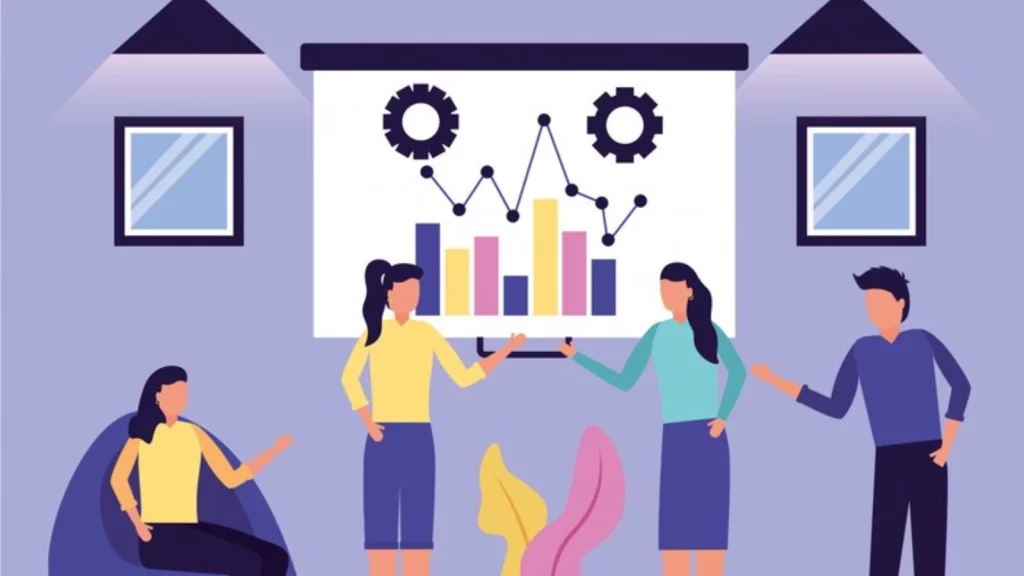Workforce forecasting is generating buzz for a good reason—it’s a game-changer in how organizations plan and manage their talent. This strategic approach helps businesses anticipate future staffing needs and allows them to stay agile in an ever-evolving market.
Companies can optimize operations, minimize disruptions, and seize growth opportunities by accurately predicting workforce requirements. The hype around workforce or staff forecasting stems from its ability to transform workforce management from a reactive process into a proactive strategy.
It empowers organizations to align their talent with their strategic goals, enhance productivity, and maintain a competitive edge, making it a crucial tool for modern business success.
Listen To The Podcast Now!
What Is Workforce Forecasting?
Workforce and staff forecasting predicts an organization’s future labor requirements to achieve strategic objectives. Using this forecasting helps organizations make besuited plans for hiring, training, and developing employees. This way, they can ensure they have the right people in the right roles, avoid problems, and work more smoothly.
In engineering management, accurate staff forecasting is essential for timely project completion and high-quality standards. Engineering projects frequently require specialized skills and must adapt to the fast-paced tech industry. A well-executed forecast aids engineering managers in budgeting and resource allocation, preparing them to meet future project demands effectively.
Tools like EmpMonitor can enhance this process by providing detailed insights into workforce productivity and attendance, ensuring that engineering managers have the data they need for precise planning. Let’s dive deeper into why workforce planning and forecasting are crucial in the tech industries. Let’s know more about why workforce planning and forecasting is needed in the tech industries.
Why Is Workforce Forecasting Essential In Tech?
Workforce forecasting is essential in tech because it enables companies to anticipate future talent needs and align their recruitment strategies accordingly. The tech industry is rapidly evolving with advancements like AI, machine learning, and emerging technologies, which create new demands for specialized skills.
By forecasting workforce needs, companies can proactively address skill gaps, optimize workforce strategies, staffing levels, and stay competitive in a market where top talent is highly sought after. Additionally, effective workforce forecasting helps businesses adapt to industry changes, ensuring they have the right expertise to drive innovation and meet project demands.
What Are The Factors To Consider In Strategic Workforce Forecasting?
When conducting strategic labor forecasting, organizations evaluate several crucial metrics to clarify their future staffing needs and stay competitive in the tech industry. Here are essential factors to consider:
-
Historical Data Analysis
Reviewing past workforce trends, including remote work patterns, automation, and job satisfaction, forms the foundation of forecasting. This data helps predict future staffing requirements.
-
Regression Analysis
This method examines relationships between variables, such as how industry demand or economic conditions might influence future workforce needs.
-
Turnover Trends
Analyzing retention data provides insights into future staffing needs. Understanding turnover rates helps organizations improve retention and minimize the need for new hires, ensuring workforce stability.
-
Seasonality
While less evident in tech, seasonal trends affect workforce forecasting. Factors like graduation dates and product launch cycles can influence hiring patterns.
-
Economic Trends
Economic conditions impact the labor market and customer demand, influencing hiring and talent management strategies. Understanding whether the market is expanding or contracting is crucial for planning.
-
Technological Advancements
Emerging technologies, like generative AI, can change skill requirements and resource allocation. Keeping up with technological trends helps organizations adapt their workforce strategies.
-
Regulatory Changes
New regulations, such as data security or sustainability laws, may necessitate changes in hiring practices and the acquisition of specialized skills.
-
Internal Supply Analysis
Assessing the current staff’s skills and growth potential helps identify skill gaps and determine whether to hire new talent or upskill existing employees. Utilizing management software can enhance the accuracy and efficiency of this analysis.
How Workforce Forecasting Works?
Workforce forecasting, also known as workforce management forecasting, involves using historical data and staffing projections to predict an organization’s personnel needs. It helps businesses in optimizing workforce system and analyze their operations with workforce management metrics.
There are two main types of labor forecasting, each with a similar goal but a different focus:
- Operational Workforce Forecasting: This type focuses on short-term needs (usually within 12 months) based on seasonal demand, company changes, and unexpected events.
- Strategic Workforce Forecasting: This type looks at long-term needs (typically between one and five years) considering internal goal shifts, changes in the competitive landscape, and the evolving talent pool.
Both types of forecasting answer these key questions:
- Do we have enough capacity for new projects?
- Where can we reallocate tasks?
- How will workforce changes affect our strategy?
- Are our teams spread too thin?
- Should we diversify our workforce?
Understanding these questions and your organization’s workforce capacity helps identify skill and staffing gaps before they become issues. A workforce planning template can assist organizations in quickly spotting changes in talent and staffing levels, aligning the current and future workforce with business goals.
Operational Workforce Forecasting Example
As a customer service manager in a retail store, you are responsible for preparing for potential staffing needs. During the holiday rush, you adjust staff schedules to handle the increased customer flow. After the holidays, you must reassign employees to prevent overstaffing during slower periods.
Operational forecasting allows you to adjust schedules and hire staff quickly before busy times. These short-term forecasts focus on upcoming situations that affect employees’ daily experiences and the organization’s bottom line. Staying ahead with operational forecasting strengthens team dynamics and prepares your team for potential disruptions.
Strategic Forecasting Example
Imagine working in a call center where you handle customer calls and direct requests. Even with excellent customer service, long wait times due to understaffing can frustrate callers. Instead of dealing with frustrated callers and increasing wait times, businesses can use labor forecasting to anticipate needs.
Effective call center workforce forecasting and management prioritize scheduling and resource allocation during peak demand times. Tools like EmpMonitor, a workforce management software can enhance this process by providing detailed analytics on employee performance and activity. This helps maintain customer satisfaction, avoid understaffing or overstaffing, and reduce overtime by identifying trends and planning accordingly.
EmpMonitor- Advanced Workforce Management Software
EmpMonitor is an advanced workforce management software designed to help businesses monitor, manage, and optimize employee productivity and performance. It provides a range of features to track and analyze employee activities, ensuring efficient operations and effective resource utilization.
Here are five of its best features:
-
Activity Monitoring
EmpMonitor tracks employee activities in real-time, capturing details like application usage, website visits, and time spent on various tasks. It helps managers understand how employees spend their time and identify productivity trends.
-
Time Tracking
The software offers robust time tracking capabilities, including automated logging of work hours, breaks, and overtime. This feature ensures accurate payroll processing and helps in maintaining compliance with labor laws.
-
Attendance Management
EmpMonitor simplifies attendance tracking by recording clock-in and clock-out times, managing leaves, and monitoring absenteeism. This feature provides insights into attendance patterns and helps in scheduling and resource planning.
-
Performance Analysis
It includes tools for analyzing employee performance through metrics like task completion rates, productivity levels, and goal achievement. Managers can use these insights to provide feedback and support employee development.
-
Screenshot and Screen Recording
EmpMonitor can capture screenshots or record employees’ screens at specified intervals. This feature allows managers to review work processes, ensure adherence to company policies, and address any concerns related to task execution.
EmpMonitor aims to enhance workplace efficiency, improve employee accountability, and support effective management through its comprehensive monitoring and reporting tools.
What Are The Workforce Forecasting Techniques?
Accurate data is as crucial for workforce planning as for weather forecasting. Workforce managers can use various forecasting methods and tools to reveal staffing and scheduling patterns depending on organizational and industry needs.
Quantitative Techniques
Quantitative techniques rely on data. For organizations with a solid historical record, these methods help uncover trends and patterns in workforce planning.
Main quantitative techniques include:
- Trend Analysis: Uses historical data on employee demographics and past employment figures to identify trends in staffing, scheduling, turnover, and retention.
- Regression Analysis: Analyzes the impact of factors such as growth, financial performance, and customer demand on workforce requirements.
- Time Series Analysis: Examines cyclical historical data to detect seasonal patterns and trends related to specific periods.
While quantitative methods excel at identifying trends and cycles, they can’t predict future outcomes with certainty. Most organizations combine these methods with others for a more comprehensive workforce forecasting.
Qualitative Techniques
Qualitative techniques may be essential for effective workforce forecasting for organizations with limited historical data. These methods rely on the insights, attitudes, and feedback from experts or focus groups.
Main qualitative techniques include-
- The Delphi Method: Collects forecasts and opinions from experts through a structured consultation process.
- Scenario Planning: Creates scenarios based on assumptions to help visualize different workforce needs.
Using simulations and sensitivity analysis to test how changes affect forecasts, it evaluates the impact of variables on scenarios.
While qualitative techniques offer personalized insights, they are based on personal experiences or opinions and may lack complete accuracy.
Hybrid Techniques
Hybrid techniques combine quantitative and qualitative methods for a more refined approach to workforce forecasting. This method blends data and opinions to identify workforce patterns and trends.
Main hybrid techniques include:
- Demand-Driven Method: Merges historical sales data with employee insights to forecast future workforce needs to be driven by turnover, reallocation, or consumer behavior.
- Technology-Infused Method: Combines trend analysis with expert opinions on emerging technologies to guide hiring and training decisions.
- Market Expansion Method: Integrates scenario planning and regression analysis to pinpoint potential skill gaps and market trends.
Though no hybrid technique is perfect, they often provide more detailed and balanced insights compared to other methods.
Casual Method
The casual method, similar to hybrid techniques, uses various essential elements for long-term planning. It looks at past data and compares it with possible future changes. This approach helps find long-term workforce gaps and discover the best ways to prepare for them.
Read More
5 Reasons Why You Need A Workforce Optimization System
9 Workforce Optimization Strategies To Know This Year
The Ultimate Guide To Strategic Workforce Planning
How Does Face Identification Work in Attendance System?
How To Forecast Workforce Needs?
According to a Customer Experience Trends Report of this year, almost 70% of leaders find it hard to forecast future labor needs. However, the importance of strategic workforce planning and forecasting is growing. To eliminate guesswork in team planning and scheduling, follow these five steps to forecast staffing needs.
1. Define Your Business Goals
Effective workforce forecasting starts with assessing internal factors. Clear business goals should reflect the organization’s vision, mission, and core competencies, which shape internal and external strategies. Without clearly identified goals, workforce forecasting is impossible.
Communicate your goals to reduce confusion and provide direction for all stakeholders. Teams focused on business development can align processes, discover new opportunities, and drive growth using company-wide goals. Identifying goals is the first step in determining short- and long-term workforce needs and addressing skill gaps.
2. Assess Your Current Workforce
Evaluate your workforce’s strengths and weaknesses by analyzing current progress toward goals and the distribution of employees. Like customer profiles, employee profiles—containing demographic, skills, and competency data—help assess the current workforce’s strengths and gaps.
Consider creating a company-wide database that includes turnover rates, employee satisfaction metrics, budget shifts, and competitor strategies. This database can offer valuable insights into current capabilities and potential gaps.
3. Consider Future Needs
Workforce Forecasting future workforce needs involves identifying potential demands based on organizational goals, growth, and other factors. Reflect on both internal and external elements, including customer needs and staffing behaviors, by asking questions such as:
- What are customers focused on?
- Which platforms and communication channels do they prefer?
- What changes are needed to reduce turnover?
- What skills are required to meet business goals?
- How does the organization compare to competitors in workforce management?
These answers help build targeted recruitment strategies and hiring practices that align with organizational and customer goals.
4. Identify Gaps Between Current and Future Talent Pools
While teams handle today’s needs, they may lack the readiness for future demands. Identify these gaps by-
- Workforce forecasting evaluates whether the workforce’s strengths and abilities align with organizational goals
- Comparing employee competencies and potential weaknesses against historical market trends and customer data
- Assessing shortcomings in staffing and hiring processes
- Recognizing patterns in employee performance and turnover
- Comparing employee profiles—skills, demographics, and career aspirations—with the workforce’s abilities
Identifying gaps is essential for adapting to changing business goals and pinpointing areas where current employees may need training.
5. Address Workforce Gaps
Identifying gaps is only the first step; you must also address them. Develop a strategy that:
- Focuses on strategic talent acquisition and onboarding to boost retention and attract future employees
- Invests in employee experience software, professional development, HR tools, and training programs to enhance workforce competency
- Regularly evaluates teams, adjusting or reallocating staffing levels to prepare for skills gaps.
- Tracks and anticipates compensation trends to offer competitive and evolving packages.
Not every strategy for filling gaps will involve new hires. Sometimes, reallocating staff is just as effective and may be easier for managers and employees.
The Bottom Line
Effective workforce forecasting is essential for organizations aiming to stay ahead in a competitive landscape. By leveraging quantitative and qualitative methods, businesses can gain valuable insights into their future staffing needs and make informed decisions. Tools like EmpMonitor can enhance this process by providing detailed analytics and tracking capabilities.
An accurate forecast helps organizations align workforce capabilities with organizational goals, manage talent gaps, and prepare for unexpected changes. Whether through analyzing historical data, consulting experts, or using advanced tools like EmpMonitor, the key lies in integrating various strategies to create a comprehensive plan.
Ultimately, investing in robust workforce forecasting enhances operational efficiency and drives long-term success by ensuring the right talent is in place at the right time.
FAQs
Que: How does workforce forecasting differ from workforce planning?
Workforce forecasting focuses on predicting future talent needs, while workforce planning involves developing strategies to meet those needs. Workforce forecasting is often the first step in the workforce planning process, providing the data and insights necessary to create effective staffing plans.
Que: How often should workforce forecasting be conducted?
Workforce forecasting is an ongoing process, with regular reviews and updates as business needs, market conditions, and technological trends change. In fast-paced industries like tech, quarterly or bi-annual forecasting may be necessary.
Que: Can small organizations benefit from workforce forecasting?
Yes, small businesses can benefit from workforce forecasting by gaining insights into future staffing needs, optimizing recruitment efforts, and ensuring they have the right skills to support growth. Even with limited resources, forecasting can help small businesses stay competitive.














